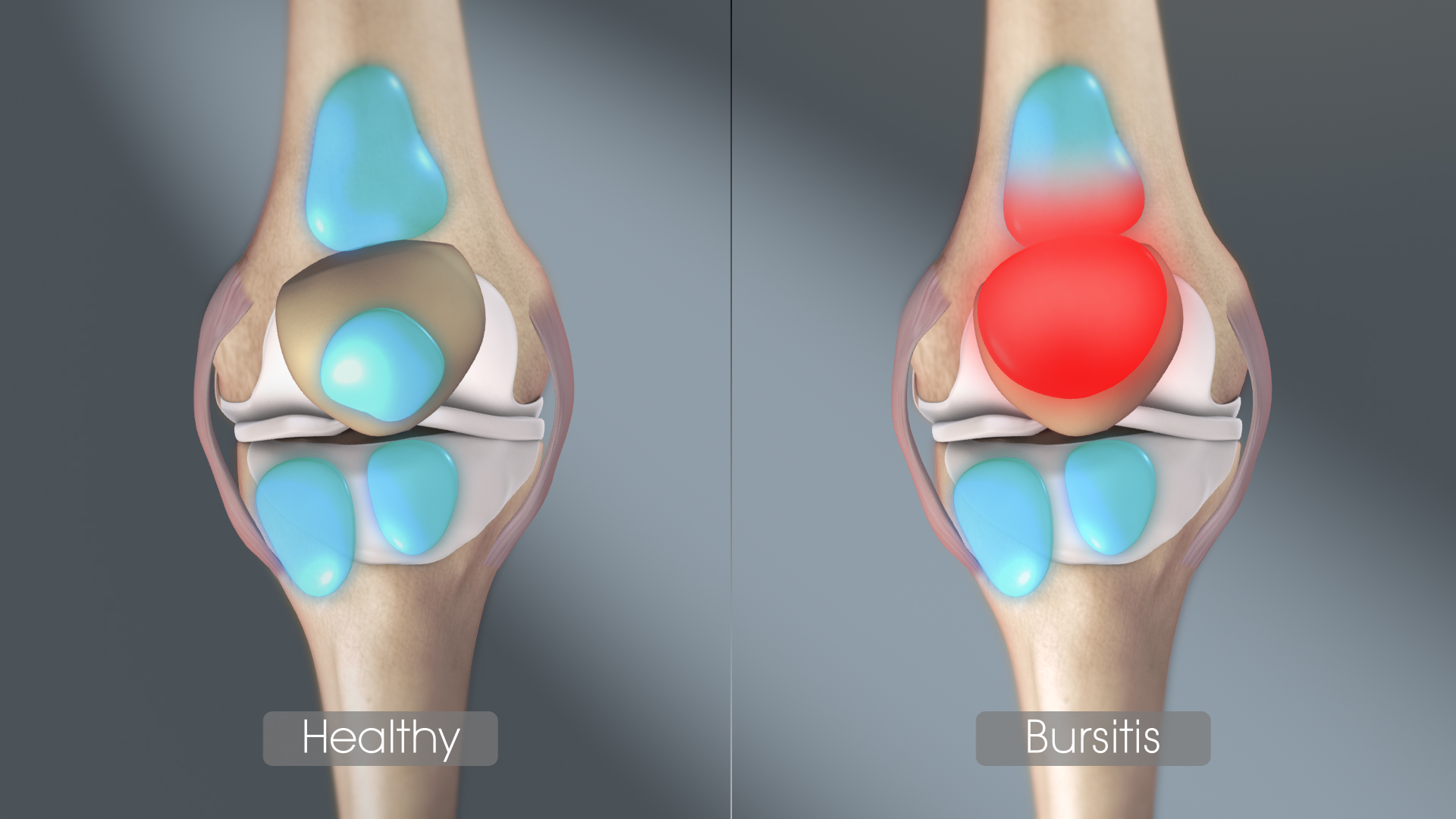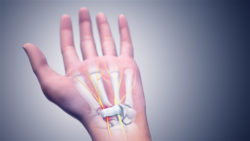The human body contains more than 150 small sacs of synovial fluid, known as bursae. These sacs cushion the points where the tendons and muscles slide across the bone. Inflammation of bursae is called bursitis.

3D medical animation still showing inflammation of bursae in a Bursitis affected joint
Bursitis causes friction in the movement across joints, leading to pain. Common locations for it are shoulders, elbows and hips, but bursitis can also occur on knees, heels and the base of the big toes.
Causes
Increasing age is the most common risk factor.
It also can happen as a result of work that requires repetitive motion or overuse of joints. Incorrect posture or poor stretching before exercise can also cause it.
Medical conditions such as rheumatoid arthritis, diabetes, obesity also increase the risk of developing it.
Symptoms
Pain is the most common symptom of it. It may build up gradually over a period of time, or can be sudden and severe, especially if calcium deposits are present. Frozen shoulder can result from the immobility associated with shoulder bursitis.
Treatment
Before beginning with the treatment, it is important to differentiate infected from non-infected bursitis. Infected bursae may require further investigation and antibiotic therapy.
Some simple ways of curing non-infectious bursitis are:
Avoiding activities that aggravate the problem
Resting the injured area
Icing the area the day of the injury
Taking over-the-counter anti-inflammatory medicines
Corticosteroids or simply steroids, are injected at the site to quickly subside the inflammation and pain.
Physical therapy including range-of-motion exercises and splinting (thumb, forearm, or bands) is also effective in some cases of it.
In rare cases, when bursitis does not respond to the other treatment options, surgery may be considered.
Conclusion
Like other injuries, bursitis can be avoided by simply paying attention to the body, and ensuring that it’s not overworking in the same form repeatedly.
Disclaimer: The information in no way constitutes, or should be construed as medical advice. Nor is the above article an endorsement of any research findings discussed in the article an endorsement for any of the source publications.

Gout: Symptoms, Causes, and Treatments
Gout is a type of complex arthritis which is caused by buildup of uric acid crystals in the joints. A person suffering from it experiences sudden and severe attacks of pain, swelling, redness and tenderness in the joints. The joint at the base of the big toe is most commonly affected. Read More..

Carpal Tunnel Syndrome (CTS): Cause, Pathophysiology and Treatments
Carpal tunnel syndrome (CTS) is a medical condition that occurs when the median nerve travelling through the wrist, gets compressed. Read More..








